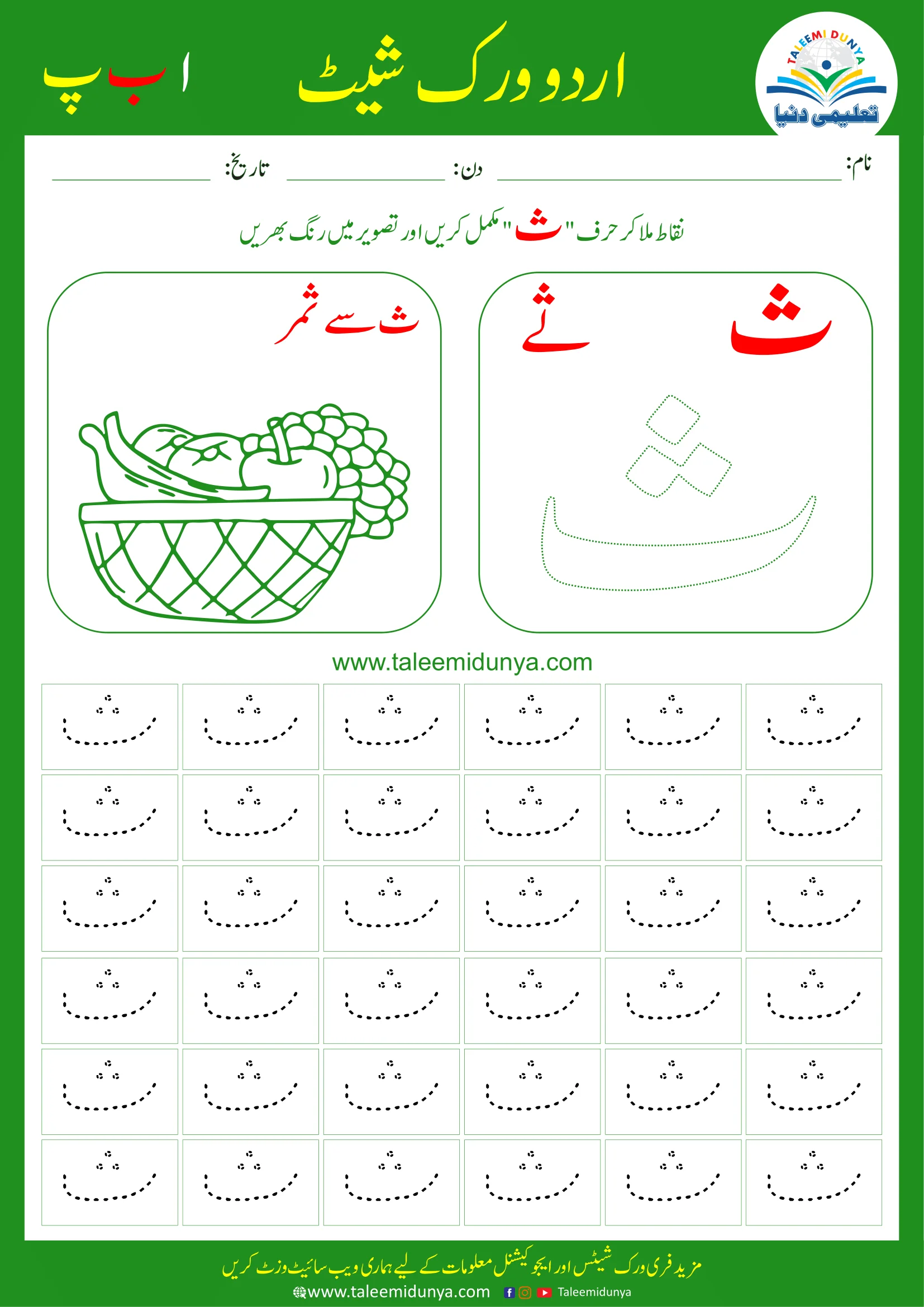Say
Say Urdu Worksheet
Say Urdu Worksheet
Embarking on the journey of understanding a language as rich and diverse as Urdu can be both exhilarating and challenging. The Say Urdu Worksheet is your gateway to mastering this beautiful language, offering a structured approach to learning that encompasses everything from the basic alphabet to complex grammar structures. By leveraging the power of Urdu worksheets, you can enhance your grasp of the language in a manner that is both engaging and effective.
Introduction to Urdu Worksheets
Urdu worksheets serve as vital tools in the educational journey of anyone eager to learn the Urdu language. They provide a structured method to practice and reinforce what you have learned, offering a balance of guided learning and self-paced study. These worksheets are designed to cater to various learning needs, from beginners to advanced learners, helping you gain proficiency in reading, writing, and understanding Urdu.
The Importance of Learning Urdu
Learning Urdu opens doors to a rich cultural heritage and a vast array of literary works. As the national language of Pakistan and a lingua franca in several regions of India, Urdu is spoken by millions of people worldwide. Mastering this language can enhance your communication skills and offer you a deeper insight into the traditions and values of South Asian societies.
Benefits of Using Worksheets
Using **Urdu worksheets** offers numerous benefits, such as providing a hands-on approach to learning. They help in reinforcing the material covered in formal lessons, allowing you to practice and perfect your skills. Worksheets can be tailored to individual learning styles, making them a versatile tool for both teachers and students. Moreover, they offer a tangible way to track progress and pinpoint areas that need improvement.
Types of Urdu Worksheets
Alphabet Practice Sheets
Alphabet practice sheets are fundamental for beginners aiming to familiarize themselves with the Urdu script. These sheets focus on the **letters** of the Urdu alphabet, enabling learners to recognize and write each character accurately. Consistent practice with these sheets helps in building a strong foundation, which is crucial for further language acquisition.
Vocabulary Building Worksheets
To enhance your vocabulary, vocabulary building worksheets are indispensable. These worksheets introduce new words and phrases, helping you expand your Urdu lexicon. By engaging with these worksheets, you can improve your ability to **read** and comprehend Urdu texts, thereby enhancing your overall language proficiency.
Grammar and Sentence Structure
Understanding the nuances of Urdu grammar is essential for constructing coherent sentences. Grammar worksheets focus on the rules and structures that govern the language, providing exercises that enhance your understanding of syntax and sentence formation. Regular practice with these worksheets can significantly improve your written and spoken Urdu.
Designing Effective Urdu Worksheets
Incorporating Visual Aids
Visual aids play a crucial role in making **Urdu worksheets** more engaging and effective. By incorporating images, charts, and diagrams, worksheets can cater to visual learners and make complex concepts easier to understand. Visual aids also add an element of fun to the learning process, keeping learners motivated and interested.
Interactive Exercises
Interactive exercises within worksheets encourage active participation and critical thinking. These activities can include fill-in-the-blanks, matching exercises, and crosswords, which stimulate cognitive engagement and reinforce learning. By incorporating interactive elements, worksheets can transform passive learning into an active and enriching experience.
Resources for Urdu Worksheets
Online Platforms and Tools
The digital age offers a plethora of online platforms and tools for accessing **Urdu worksheets**. Websites like [Khan Academy](https://www.khanacademy.org/) and [BBC Languages](http://www.bbc.co.uk/languages/) provide a wide range of free resources that can be added to your learning repertoire. These platforms offer interactive exercises and downloadable content to support your Urdu learning journey.
Printable Worksheets
For those who prefer a tactile learning experience, printable worksheets are an excellent option. These can be easily downloaded and printed, allowing you to practice anytime, anywhere. Printable worksheets offer flexibility and convenience, making them ideal for self-study or classroom use.
Tips for Teachers and Parents
Engaging Students in Learning
Engagement is key to successful language acquisition. Teachers and parents can enhance student interest by incorporating games and interactive activities into the learning process. Creating a supportive and stimulating environment can significantly boost motivation and encourage a love for learning Urdu.
Customizing Worksheets for Different Levels
Customizing worksheets to suit different learning levels is essential for effective teaching. By tailoring content to match the learner's proficiency, educators can ensure that worksheets are challenging yet achievable. This personalized approach can help prevent frustration and foster a sense of achievement as learners progress through different levels of difficulty.
In conclusion, the Say Urdu Worksheet offers a comprehensive and effective way to master the Urdu language. Whether you are a teacher, student, or parent, understanding the diverse types of worksheets and their applications can greatly enhance the learning experience. With the right resources and a strategic approach, you can unlock the full potential of Urdu worksheets and embark on a rewarding linguistic journey.
